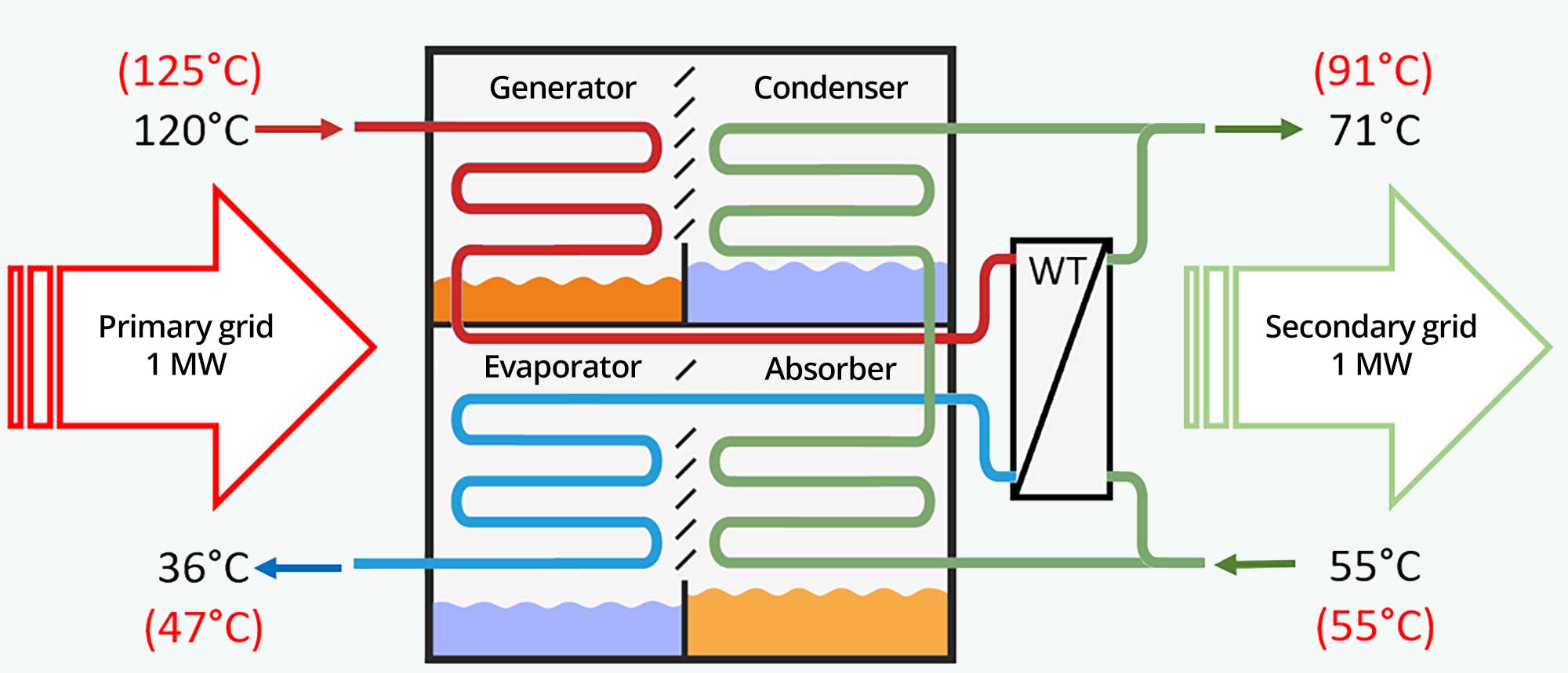Absorption heat exchangers
The Absorption Heat Exchanger is used to actively reduce the return flow temperature in large heat transfer stations. It uses the higher flow temperature on the primary side to actively reduce the return temperature. The higher the difference in flow temperatures between the primary and secondary side, the lower the return temperature. Compared to a heat exchanger as heat transfer station, the return flow of the primary network can often be up to 20 Kelvin colder.
In district heating networks:
The transport capacity in the network is increased by lowering the return temperature.
In addition, the cold return flow often enables or improves the use of waste heat sources on the return path or directly in the heating plant.
In geothermal energy:
The performance of the geothermal plant is increased by lowering the return temperature to the geothermal well.
StepsAhead designs Absorption Heat Exchangers so that all required temperature ranges can be reached. The temperatures in the secondary network can reach up to 120°C.
Specification (example)
Primary side
Flow: 120°C
Return: 36°C
Secondary side
Flow: 71°C
Return: 55°C
District heating network
Flow: 120°C
Return: 36°C
Customer or subnetwork
Flow: 71°C
Return: 55°C

